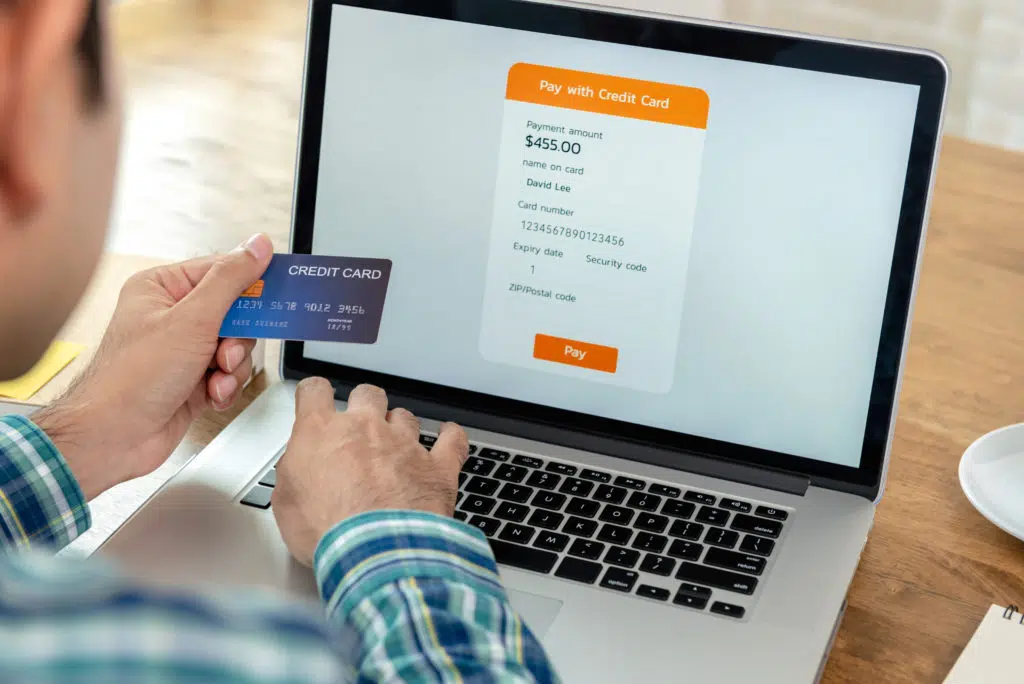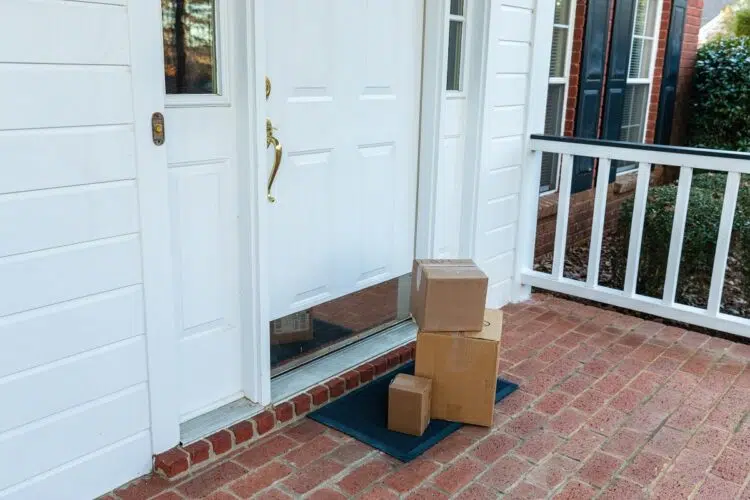Here’s everything about sharing your Amazon order number being safe:
In general, an Amazon order number is not a high-risk piece of information for you to share.
There are good reasons to share it, such as working with a secret shopper organization or trying to get rebates for giving out these details.
Still, it is not a great idea to share order numbers with the masses.
So if you want to learn all about how safe it is to share your Amazon order number, then you’re in the right place.
Let’s get started!
- Eachnight.com: Legit or Scam?
- USPS Postage Due: Meaning?
- Paid2Tap: Legit or Scam?
- 855 Area Code: Calls Safe?
- Unveiling the Truth: Is Stubhub Legit or a Scam?
- Venmo for Craigslist: Safe?
- Fake Snapchat Accounts: What Is the Point?
- Sharing PayPal Transaction ID: Safe?
- Scammers Use Your Signature: What Happens?
- Spam Accounts on Instagram: Why?

What Information Is Contained in an Amazon Order Number? (5 Things)

In order to understand the risks associated with Amazon numbers, there are a few things to consider.
What information is attached to the number?
Who can see that information?
What can they do with it?
Let’s start with the first part.
What is contained in the order number?
You can easily guess a few of the tidbits attached to an order number, but we can get deeper into the idea.
Each of these sections will cover a major piece of information and why you might not want to share it.
#1 Date the Order Was Placed

This is an essential piece of information for an order number.
Since the number is designed to allow Amazon and the sender (and the buyer) to keep track of the order status, it has to include the original date.
This is used to make comparisons and see if everything is working as intended.
It also comes up if order fulfillment is disputed.
What could someone do with the date an order is placed?
From a nefarious standpoint, this information, by itself, isn’t worth a whole lot.
Tracking algorithms and big data could use large numbers of order dates to try to generalize behavioral trends, but as for your personal security, this information alone is not a major risk.
#2 Shipping Status

The primary use of an order number for a customer is tracking shipping.
If you’ve ever used this feature on Amazon, you already know that you can use your order number to see if payment was received, the order was sent, and where the order is on its route to you.
Shipping status is another thing that isn’t super useful.
You could imagine a scenario where someone would track an order that isn’t theirs in an attempt to steal it upon delivery, but that would still require a lot more information.
They would have to know where the order is going, and that’s a big challenge for such would-be pirates.
#3 Product Details

Product details include information as to what was ordered.
It’s usually an item, and anyone with access to the order number can see exactly what you bought.
Does that matter?
From an individual perspective, not really.
Your purchase choices could potentially come up in a social engineering effort to infiltrate your account, but it’s not the most likely scenario.
Regardless, social engineering will be discussed in more detail in a bit.
This is another thing that could contribute to large-scale data analytics.
Companies definitely use this kind of information to inform their supply chains and business models.
On an individual level, this doesn’t matter unless it makes you feel uncomfortable.
#4 Payment Data

This sounds scary, but it usually isn’t.
The payment data is secured and obscured as you would expect.
You can possibly see the last four digits of the card used for payment, and that’s not enough to steal the card or perform some of the more troubling actions you might imagine.
That said, even the last four digits of a card can be used when wrongdoers try to steal accounts.
They can use an order number to verify the last four digits as part of a process that confirms identity.
So, there are scenarios where giving away the last four digits of a card is partially problematic, but other things have to go wrong too.
It’s also important to know that most people can’t see the payment data with just an order number.
They have to be able to confirm that they are you, the seller, or an approved Amazon party.
So this still isn’t as risky as it could be.
#5 Your Address

Your address is similar to your payment information in terms of security.
It is not visible to just anyone.
You need the confirmation number and approval to see the address.
If your address is revealed, though, it can definitely be used in scams and social engineering attacks.
Addresses are often used to partially confirm identity.
Your address can also feel like a vulnerability.
You don’t always want strangers to know where you live.
So, here’s the mixed bag.
By itself, the order number can’t exactly give away your address, but combined with other risks, it could end up that way, and your address can be used in a lot of harmful ploys.
What Can a Tinder Scammer Do With Your Phone Number?

Before I continue, have you ever been asked for your phone number on Tinder?
Watch out.
Scammers can take advantage of your phone number in several ways.
Scammers can sell your information and result in annoying spam calls and advertisements, at the very least.
Scammers can use your phone number and personal information to steal almost anything from you.
There is almost no limit to how bad things can get.
Learn all about what a tinder scammer can do with your phone number here.
Who Has Access to the Amazon Order Number?

Alright. Some of this information is a little scary.
Some of it doesn’t matter too much.
Most of it isn’t entirely accessible, even if you have the order number.
But, who can actually find your order number or use it to gain any of the information above?
Naturally, anyone you tell the number to can try to look up the order.
They might have mixed success depending on what they’re trying to find.
But, there are three groups that do have access to the order number and the information tied to it.
The first is you.
Hopefully, that’s not a frightening prospect.
The second is Amazon.
They’re handling the order, and they created the order number. Of course, they can look it up.
That’s the whole point.
The third party that can see and uses the order number is the seller.
It’s important to remember that Amazon is a hub of sellers and an infrastructure system for those sellers.
The person who actually sells you an item often is not Amazon.
It’s a third party, and they absolutely need to be able to track the order to ensure its fulfillment.
Outside of these groups, people cannot generally see an order number unless you provide that information directly.
What Can Be Done With the Amazon Order Number? (2 Things)

We’ve discussed what information is contained in an order number.
We’ve also covered who has access to that information.
But why does it matter?
What can someone actually do with this information?
Some ideas were discussed before, but we can get deeper into the idea.
What it really comes down to is the culmination of information.
An order number alone is a limited risk.
But, when it is added to other personal information, it can turn into something dangerous.
Primarily, there are two ways that your order number might be used against you.
It can come up in scams that trick you into unfortunate mistakes.
It can also come up with social engineering, and that is probably the top risk associated with giving out Amazon order numbers.
#1 Social Engineering

Social engineering is the biggest risk.
This is when nefarious parties trick people into giving away information that allows them to carry out attacks or steal things (or cause harm in any number of other ways).
The order number by itself isn’t worth a whale lot, even for someone practicing social engineering.
But, if the number is paired with your name, things can get a lot riskier.
Any information beyond that only serves to compound the risks.
Someone with the right skills can use your name, order number, and other personal information to impersonate you and contact Amazon.
How did they get other personal information?
Possibly from social media.
Regardless, they will contact Amazon and try to impersonate you.
Using these bits of information that they have collected, they might convince an Amazon worker that they own the account but can’t access it.
If the employee believes them and is able, they can transfer ownership of the account to the social engineer.
That person now has complete control over your account.
They can redirect orders to go to different addresses.
They can use the cards on file to make purchases.
They can wreak havoc in general on your account.
It’s bad all around.
The important thing to remember about social engineering is that it becomes more effective as more information is available.
The nefarious individual will definitely need more than just your order number, but considering their skills, they might be able to find that information.
Giving away your order number adds to the general sense of risk.
#2 Scams

Outside of the social engineering scenario above, there are plenty of scams that people run, and many of them involve order numbers.
One example is easy to understand.
You get an email from Amazon referencing the number from an order you recently placed.
They say that they need to confirm details to discuss a problem, so you go through the confirmation process.
Unfortunately, in this example, you just gave private details to a scammer pretending to be Amazon.
They seemed legitimate because they already knew your order number.
That’s one of the main issues with giving out your order number.
It’s information, and clever people can find ways to use it.
So, as a general rule, only give out the number to parties you trust.
What Can a Scammer Do With Your Signature?

On another note, what is the use of your signature to a scammer?
A signature might not always be enough to run a scam, but with creativity and resources, there are no solid limits.
Scammers can steal money from you, take out credit in your name, defraud voting, steal your identity, and more with your signature.
Many doors can be partially unlocked by a stolen signature.
Learn all about what a scammer can do with your signature here.
- Eachnight.com: Legit or Scam?
- USPS Postage Due: Meaning?
- Paid2Tap: Legit or Scam?
- 855 Area Code: Calls Safe?
- Unveiling the Truth: Is Stubhub Legit or a Scam?
- Venmo for Craigslist: Safe?
- Fake Snapchat Accounts: What Is the Point?
- Sharing PayPal Transaction ID: Safe?
- Scammers Use Your Signature: What Happens?
- Spam Accounts on Instagram: Why?

